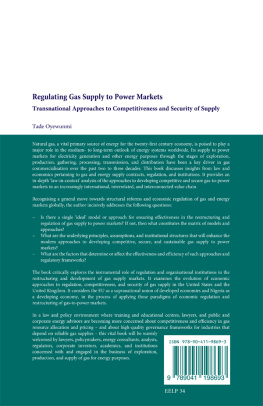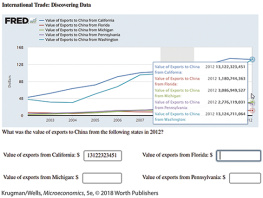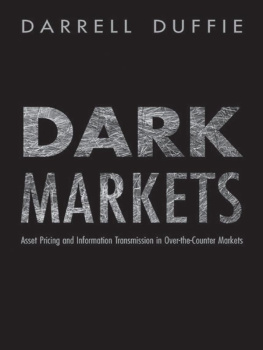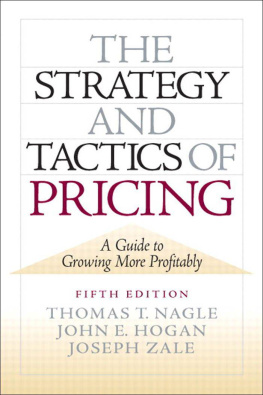Thomas-Olivier Leautier - Imperfect Markets and Imperfect Regulation: An Introduction to the Microeconomics and Political Economy of Power Markets
Here you can read online Thomas-Olivier Leautier - Imperfect Markets and Imperfect Regulation: An Introduction to the Microeconomics and Political Economy of Power Markets full text of the book (entire story) in english for free. Download pdf and epub, get meaning, cover and reviews about this ebook. City: Cambridge, year: 2019, publisher: The MIT Press, genre: Science / Business. Description of the work, (preface) as well as reviews are available. Best literature library LitArk.com created for fans of good reading and offers a wide selection of genres:
Romance novel
Science fiction
Adventure
Detective
Science
History
Home and family
Prose
Art
Politics
Computer
Non-fiction
Religion
Business
Children
Humor
Choose a favorite category and find really read worthwhile books. Enjoy immersion in the world of imagination, feel the emotions of the characters or learn something new for yourself, make an fascinating discovery.

- Book:Imperfect Markets and Imperfect Regulation: An Introduction to the Microeconomics and Political Economy of Power Markets
- Author:
- Publisher:The MIT Press
- Genre:
- Year:2019
- City:Cambridge
- Rating:4 / 5
- Favourites:Add to favourites
- Your mark:
Imperfect Markets and Imperfect Regulation: An Introduction to the Microeconomics and Political Economy of Power Markets: summary, description and annotation
We offer to read an annotation, description, summary or preface (depends on what the author of the book "Imperfect Markets and Imperfect Regulation: An Introduction to the Microeconomics and Political Economy of Power Markets" wrote himself). If you haven't found the necessary information about the book — write in the comments, we will try to find it.
The power industry is essential in our fight against climate change. This book is the first to examine in detail the microeconomics underlying power markets, stemming from peak-load pricing, by which prices are low when the installed generation capacity exceeds demand but can rise a hundred times higher when demand is equal to installed capacity. The outcome of peak-load pricing is often difficult to accept politically, and the book explores the tensions between microeconomics and political economy.
Understanding peak-load pricing and its implications is essential for designing robust policies and making sound investment decisions. Thomas-Olivier Lautier presents the model in its simplest form, and introduces additional features as different issues are presented. The book covers all segments of electricity markets: electricity generation, under perfect and imperfect competition; retail competition and demand response; transmission pricing, transmission congestion management, and transmission constraints; and the current policy issues arising from the entry of renewables into the market and capacity mechanisms. Combining anecdotes and analysis of real situations with rigorous analytical modeling, each chapter analyzes one specific issue, first presenting findings in nontechnical terms accessible to policy practitioners and graduate students in management or public policy and then presenting a more mathematical analytical exposition for students and researchers specializing in the economics of electricity markets and for those who want to understand and apply the underlying models.
Thomas-Olivier Leautier: author's other books
Who wrote Imperfect Markets and Imperfect Regulation: An Introduction to the Microeconomics and Political Economy of Power Markets? Find out the surname, the name of the author of the book and a list of all author's works by series.












 if the price cap is always reached on-peak, for
if the price cap is always reached on-peak, for  . The capacity-maximizing cap is
. The capacity-maximizing cap is  , and p = 3.9. Equilibrium capacities for different values of the cap are
, and p = 3.9. Equilibrium capacities for different values of the cap are  , and bKC(p) = 6.2. Source: Lautier (2018).
, and bKC(p) = 6.2. Source: Lautier (2018). (left scale) and expected net surplus
(left scale) and expected net surplus  (right scale) if the price cap is always reached on-peak, for
(right scale) if the price cap is always reached on-peak, for  . The surplus-maximizing cap is p* = 3.6, higher than the capacity-maximizing cap
. The surplus-maximizing cap is p* = 3.6, higher than the capacity-maximizing cap  , and close to the highest admissible cap p = 3.9. Source: Lautier (2018).
, and close to the highest admissible cap p = 3.9. Source: Lautier (2018).